Last Updated on April 15, 2021
The lack of female friendships is central to the recent British costume dramas “Bridgerton” (2020) and “Sanditon” (2019). These relationships prove to be ultimately quite brittle when the young women in each series are confronted by competition inherent to women in the patriarchal Regency era marriage market.
Each Austen-derivative or inspired show focuses on romantic plots at the cost of strong female bonds. This is a loss that Austen herself depicts at length in her 1816 novel Emma through the obstruction of friendship between Emma Woodhouse and Jane Fairfax.
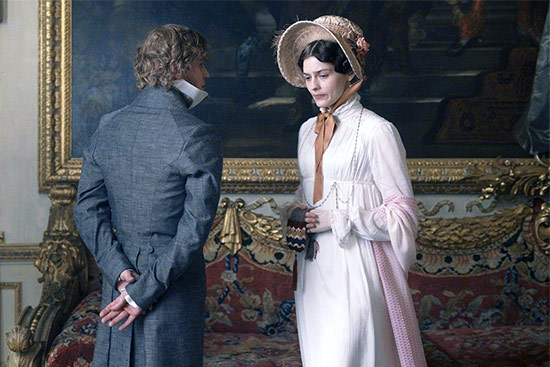
To help keep this site running: Willow and Thatch may receive a commission when you click on any of the links on our site and make a purchase after doing so.
Jane Fairfax and Emma Woodhouse can’t be friends. Threatened by one another’s potential desirability to the other’s suitor, Emma and Jane’s friendship does not consummate while they are single women. Once this issue is erased by their respective engagements, their commitments to their husbands and new responsibilities in the home are also to the detriment of intimate female friendship.
Emma Woodhouse is an atypical Austen heroine: her prettiness and charm are bolstered by both financial security and status, albeit within the intimacy of Highbury. This is an advantage not experienced by Anne Elliot, Fanny Price, the Bennets, or the Dashwoods, who for all their attributes, either have no fortune or only a tenuous proximity to one at the start of their stories.
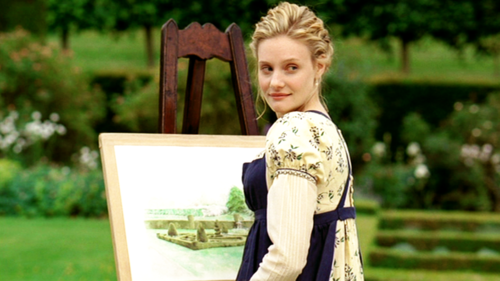
Emma is also arguably the most unlikeable Austen heroine, which is no accident on the part of the author who was famously quoted by her nephew James Edward as having stated that she had written “a heroine whom no one but [her]self will much like,” (qtd. in Dooley).
While we are not really privy to others’ opinions of Emma -–outside of Knightley’s remonstrations for her often petulant behavior–- we are aware of Emma’s baseless antipathy towards another young woman in the community: Jane Fairfax. Much like Fanny Price, the orphaned Jane is the ward of her wealthier relations, the Campbells, and without wealth, her beauty, talent, and virtue are all that she has to recommend her in the marriage market.
Yet, even despite their differing socio-economic status, there is commonality in Jane and Emma’s age and in their situations given that both of their mothers have died. One might assume, especially given Highbury’s limited social circle, that these two women would be natural friends. But Austen ultimately leaves this potential friendship unfulfilled.
In the course of Emma (1815), the eponymous heroine regards Jane Fairfax with, at the very least, ambivalence, and typically with suppressed jealousy as a result of Jane’s greater accomplishments, while perceiving her as a threat to her unacknowledged desire for Mr. Knightley at the end of the novel.
In the novel’s conclusion Jane and Emma are in the same room after their respective engagements to Frank Churchill and Mr. Knightley but they do not directly interact a single time. The emotional and physical distance that characterizes their relationship throughout the novel is encapsulated in this scene and is a result of their participation in the marriage market which has won them their husbands and cost them the opportunity of female friendship based on equality.
Joan Aiken seeks to explain this distance between Jane and Emma in her retelling, Jane Fairfax (1997). Before covering and expanding upon the events of Austen’s original novel, she first imagines a backstory where the two interacted as children and even then did not get along.
It is perhaps unsurprising that Aiken, awardee of the title of Member of the Order of the British Empire for contributions to children’s literature, frames the novel with the characters’ childhoods, providing context for Emma and Jane’s relationship through their early lives. But while Aiken does explore the discord between the two characters as children, she does not suggest that their near-immediate dislike of each other is what stifles potential for a friendship between them later in life.
Instead, she implies that, recognizing each other as equals, the lack of a friendship can be explained by jealousy and an assumed adversarial relationship between eligible women in the marriage market. By highlighting this dynamic which is present in the original novel, she explores the enmity and stifled friendship of Emma and Jane as it reflects the culmination of the patriarchal pressures that put women at odds with each other.
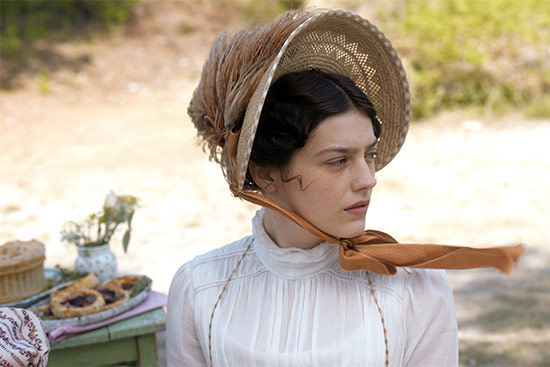
Aiken explores this competition for male attention in two primary ways: first, by constructing the larger childhood backstory between the two women which evidences the early seeds of jealousy; and second, she imagines a moment of direct conversation between the two women after the revelation of the engagement between Jane and Frank Churchill where they speak to their regret for not becoming friends and acknowledge how the patriarchy separates them again once they become married women consigned to their husbands and households.
The distance between the Jane and Emma that Austen imagined and which Aiken elaborates upon can be effectively described as an “interrupted friendship” which is a concept that the eminent literary scholar Ruth Perry defines in her article Interrupted Friendships in Jane Austen’s Emma.
Perry explains how Austen deliberately leaves the potential for a relationship between the women unused before the void between them as peers is solidified by their respective marriages. Their marriages will remove them from each other and end the comparative –-although still regulated-– freedom of an unmarried woman without the obligations of marital life:
The great unfinished business of the novel is the never-quite managed friendship of Emma and Jane Fairfax, the two superior young ladies whose association we wait for, whose conversation promises the most delightful equality of tastes and interests, but who are parted on the eve of their mutual good-will by their two marriages. All through the novel we long for an improvement in their relations, for the sake of each differently deprived young woman. Austen scarcely misses an opportunity to emphasize how desirable this friendship is, not only for the two principals, but in the eyes of their various friends and relatives. (189)
In essence, Austen created two women who would appear to be natural companions and repeatedly points to how well-suited the women would be as friends, but ultimately does not grant Highbury or her audience their desire to see the women befriend each other.
As Perry argues, this great “missed connection” can be explained in part due to Emma’s preoccupation with “the marriage plot” where her unequal dynamics with Mrs. Weston and Harriet model the inequity Emma herself will have to accept once she enters into a marriage with Mr. Knightley. Once married, she will be guided by her husband much in the manner that she attempts to orchestrate the lives of other women.
In this way, according to Perry, Emma’s relationships with other women can be interpreted as “preparatory” for marriage in their unequal power dynamics and contain a “running commentary on the marriage plot” (190). However, it isn’t simply that Emma is practicing marriage, albeit an inversion of what she’ll experience as the submitting party, and is thus uninterested in any relationship that won’t comply with that model in its inequity.
Although Jane’s mind is less malleable than Harriet’s, which prevents Emma from asserting the type of control Perry describes, Emma’s unwillingness to be Jane’s friend primarily stems from Emma’s jealousy and is indicative of another negative power discourse endemic to the structures of the patriarchy: felt competition between unmarried women in the marriage market.
Women today do not have the same looming pressure to perform against each other in a “marriage market” as they did in Regency society, but continue to be pitted against each other as a result of gendered socialization beginning when they are children. This is certainly relevant to contemporary audiences, as the internalization of misogyny is reflected in toxic systems women often participate in where they can bolster their own social capital by condemning the behavior or appearance of other women.
Aiken explores how such socialization in their early lives might have informed Jane and Emma’s dynamic, attributing their divide to not only the tensions of class difference but also to jealousy, and thus competition, fostered since childhood. An early scene in Jane Fairfax depicts how two elements of their relationship are intertwined where the narrative shows residents of Highbury comparing Emma and Jane from an early age.
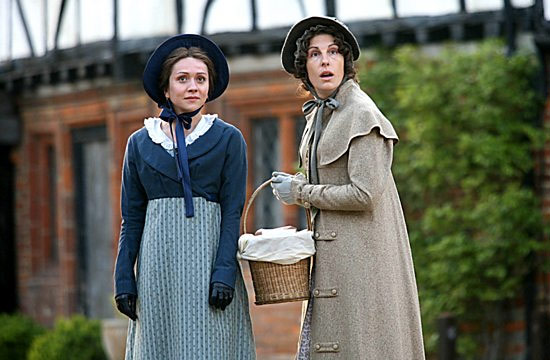
As a result of Jane’s position as a recipient of the Woodhouses’ charity and, in this specific instance, Emma’s outgrown clothing, Aiken depicts an elderly woman in the town noting how, “That cerise muslin becomes [Jane] far better than it ever did Emma, especially now that it has faded” (10). This comment exemplifies how women perpetuate the system of comparing women to each other in the early stages of girlhood.
Even more positive examples of comparisons between women, as with the old woman’s compliment towards Jane, are inevitably double-sided, as someone has to be lowered to praise the other in these arrangements. Jane could just as easily encounter the unfavorable opinion as is presented directly afterwards: “Bless me child! You must take to growing a little quicker; indeed you must! Why, I can remember that Isabella wore that pelisse when she was but four years old, and here you are turned six and it still fits you well enough!” (10).
Emma is not spared comparisons either given her superior social position: she is especially threatened by Jane’s superiority on the piano as noted by their mutual instructor and as depicted in the original novel (12). The scene’s relevance for audiences is reflected by the weight cinematic adaptations give it, as shown in the most recent film adaptation, Emma. (2020).
In this representation, directed by Autumn de Wilde, Emma’s envy and embarrassment during Jane’s expert piano solo are made obvious by a dour look and the agitated fluttering of her folding fan; Emma’s response to Jane’s performance is so visible that Mr. Knightley observes to Emma that “[she] make[s] it very plain [she] does not like Miss Fairfax” before implying that Emma’s bitterness is rooted in wanting to be viewed as just as “accomplished.”
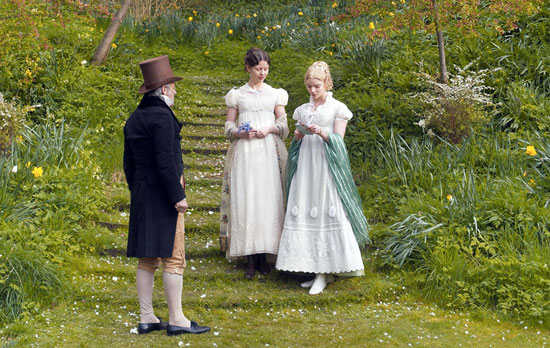
Such scenes not only evidence how early on women are set up to perceive themselves in competition to each other and to derive praise from comparison, but also provide a background for the sense of competition and threat between Jane and Emma.
As emphasized by Aiken and de Wilde alike, Emma is deeply threatened and unnerved by Jane as she is a talented, beautiful woman who is not only admired in the community but who represents the “accomplishment” Emma aspires to herself (as Mr. Knightley insinuates) and thus she poses a threat in the marriage market. This anxiety that Jane seems to produce in Emma reflects the unilateral vulnerability to homosocial competition experienced by women. Despite having status and wealth as well as professing not to be interested in marriage, Emma is ultimately subject to the same pressures and insecurities as other women in the same patriarchal value system. Jane provokes a sense of competition in Emma which exposes this shared experience and prevents her from forming a friendship with Jane.
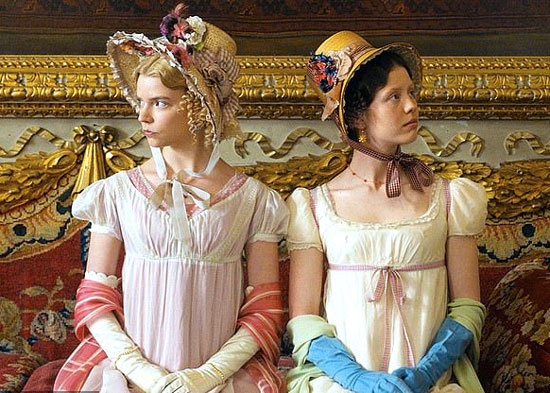
In the original novel, one of the ways that Emma tries to neutralize this competition with other women seems to be by befriending a woman inferior to her in class and intelligence as seen with her relationship with Harriet Smith.
Emma’s relationship with Harriet is comfortable for Emma as she turns her into a pet rather than recognizing her as an equal. Essentially, despite being described as pretty and amiable in her own right, Harriet offers no real comparative threat to Emma or her vanity as she is of a lower class and has a malleable mind— a perfect plaything.
This is evident in the initial description Austen offers of Emma’s perception of Harriet upon meeting her: “Harriet was certainly not clever, but she had a sweet, docile, grateful disposition; was totally free from conceit; and only desiring to be guided by any one she looked up to… altogether [Emma] was quite convinced of Harriet Smith’s being exactly the young friend she wanted” (Austen 26).
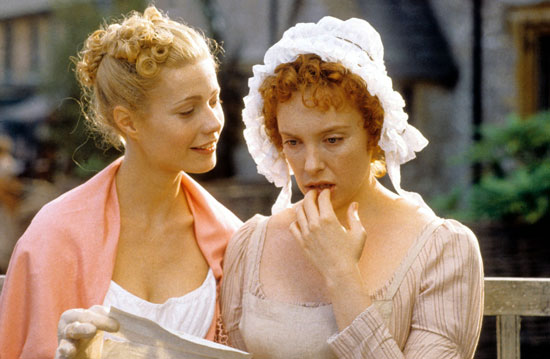
The key words to note here are “grateful,” “free from conceit,” and “guided,” as Emma does not recognize Harriet as an equal, and thus real competition. As much as she expresses love for her, Emma effectively views Harriet as a doll to play house with in the all-consuming marriage plot that Perry describes.
It is also worth noting that Emma’s perception of Harriet as a “safe” companion is perhaps part of what makes Harriet’s later interest in Mr. Knightley and question of his reciprocal interest so distressing for Emma. It’s not something she ever conceived of as possible due in large part to Harriet’s class, but Emma’s own growing interest in marriage, and the destabilization of her relationship with Mr. Knightley in response to this revelation, allow her to gain awareness of the currency of female beauty and accomplishment without regard to class.
Emma had already experienced a degree of this anxiety before as evidenced in her aloofness to Jane, but the momentary real possibility that she could be passed over by another woman of even lower origins than Jane appeared to have sparked Emma’s realization of her own real vulnerability as a woman in an economy of attractiveness and fuels her increased feelings of vulnerability.
Although she does not dabble in the same manipulative behaviors as Emma or display the same wealthy petulance, the Jane that Aiken paints does not seem immune from the compulsion that Emma has to form relationships of inequality. In fact, none of the female relationships in either novel model true equality in terms of social status or assessed desirability.
It is telling that Jane’s closest friend would be Rachel Dixon née Campbell, a character alluded to in Austen and characterized by Aiken as plain, stuttering but sweet, and the recipient of a proposal from Matt Dixon only second to Jane (156). While Jane’s close friendship with Rachel is largely a result of her circumstances as a ward of the Campbells, her comfort with Rachel is undoubtedly bolstered by her being non-threatening much in the same way that Harriet is to Emma. Conversely, Jane’s ability (although unexercised) to win the attention of Matt Dixon over Rachel actually models and confirms what Emma later feared of Harriet as it evidences the efficacy of beauty and accomplishment over wealth.
Additionally, Emma represents an obvious threat to Jane’s feeling of security in her affections for Frank Churchill as she is constantly subjected to viewing his flirtations with Emma. These attentions are meant as subterfuge for Frank and Jane’s secret engagement but are so compelling as to convince Emma herself and certainly to shake Jane as you might infer from the original novel and as is expressly depicted in Aiken’s work.
Despite their similarity, Emma and Jane never befriend one another. The patriarchal pressures felt by women socialized to view themselves as competitors in the marriage market is too tall a hurdle to overcome.
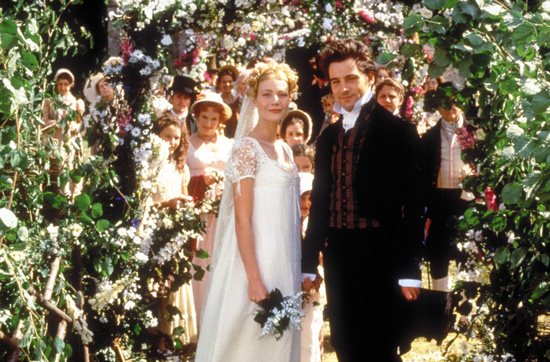
Ultimately at the end of Emma, Jane and Frank Churchill are able to openly engage thanks to his aunt’s death. Emma and Mr. Knightley become engaged as well and each romantic plot is neatly tied up. Both women are settled and the need to compete for male attention is removed. However, as Aiken knows well, Austen still does not allow readers the satisfaction of a clear resolution between these two tacit competitors.
At the end of Emma, even though both women inhabit the space of the final scene, their distance from each other is felt as there is not a word exchanged between them while Emma speaks directly only with Frank and looks periodically at Jane from across the room (448-449).
Even while the cause of their relational –and spatial– distancing has been resolved by each of their successes in the marriage market and the stability that provides, the women will be separated by the demands that marriage entails. In Austen’s novel, at least on Emma’s side, all that is left in terms of female friendship is a wistful glance at what might have been and a glaring space between the women designed to leave readers unsatisfied and to question what might have kept them apart.
Aiken grapples with this question throughout Jane Fairfax, but her answer is most clearly articulated in the last scene of her own novel as she fills the gap that Austen left with a direct conversation between the two rivals. In this conversation, they recount and regret their early and prevailing antipathy for each other. Aiken’s project with the whole novel is clearly intimated here as they reflect on why they had never become friends.
Emma first says “Do you know, I used to envy you so!… And people were always saying we should be friends, because we were the same age; that seemed, somehow, to make us into rivals. And you were so much better than I was at everything” (251). For her part, Jane replies “[How horrible! I suppose] in a small neighborhood as this, people like us, who have some similarities, are almost forced into rivalry by their acquaintances continually comparing them” (251-252).
Both women acknowledge the basis for their enmity and identify its grounds in jealousy and in the impact that local and also larger social systems have on “people like [them]” (read: young women). Yet, even given their reconciliation and newfound understanding of each other, it appears the ship for female friendships has sailed as they will both be married soon and, as Jane puts it, “Now [they] shall never have the chance [for friendship]; it is too late.” Emma agrees and says “with equal sadness: ‘Yes, that is true. But at least we have stopped being enemies’” (252). She is also resigned to what is accepted as the natural consequence of marriage: the sacrifice of any strong female relationships that have not been interrupted by patriarchal structures beforehand.
As evident in this final scene, Aiken’s overarching project with Jane Fairfax is to discuss what Austen herself showcased in the original novel, which is the ways that female friendship can be weakened or entirely disrupted out of compliance with patriarchal structures.
Austen published the novel in the early 19th century and Aiken’s project was published in the 1990s, but there is still an ongoing discussion of what Perry defines as “interrupted friendships.” This is clearly the case as both the streaming phenomenon and recent romantic Regency romp “Bridgerton” on Netflix and PBS’s short-lived but adored “Sanditon” speak to the same divisive structures throughout. In “Bridgerton,” the beautiful protagonist Daphne arguably has no real female friendship based in equality and even her relationships with her sisters (and especially Eleanor) would be more accurately characterized as cordial rather than intimate.
Instead, Daphne inevitably makes enemies of other young women throughout season one as she attempts to navigate the marriage market. Her strongest female relationships are with her mother and Lady Danbury but these are based in their matriarchal guidance and occur because the older women’s life stage precludes them from being Daphne’s competition instead.
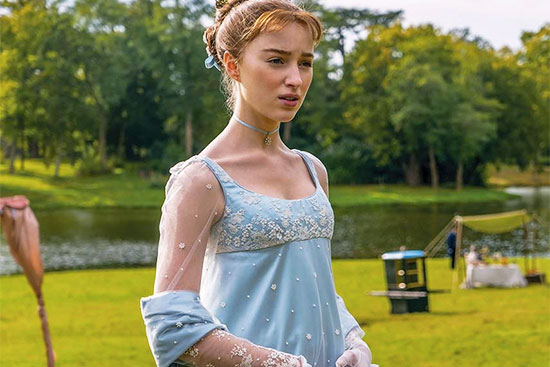
Lady Whistledown, the seemingly omniscient and influential gossip columnist, also models the role of social censure –and especially as policed within a community of women– as one word from the informed source has the power to uplift or demolish a women’s prospects. Once Daphne successfully secures herself the Duke of Hastings she has removed herself from an adversarial role with other young women, but as in Emma, she is then consumed by her married life, with no time allotted for female friends.
Similarly, in “Sanditon,” although it seemed early on that there would be female solidarity and friendship between the protagonist Charlotte and another character Georgiana, any chance of this was stifled by Charlotte’s privileging of her own romantic goals.
Charlotte and Georgiana initially had what seemed like a close friendship where Charlotte even facilitated Georgiana meeting her lover against the wishes of Georgiana’s guardian and Charlotte’s romantic hope Sidney. Yet, Charlotte’s relationship with Georgiana was also largely a means to interact with Sidney and Georgiana seems to be replaced when Charlotte befriends the newly arrived Lady Susan who, in addition to being an Easter-egg of another unpublished Austen work, serves as the means for Charlotte to recognize her feelings for Sidney through a conversation at a masque.
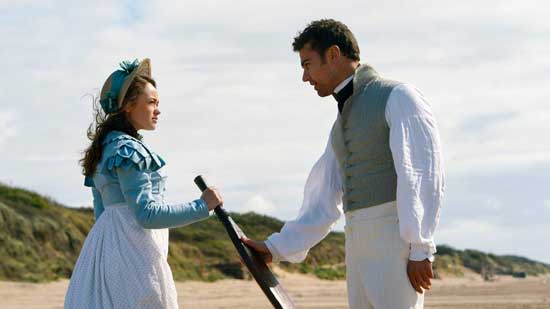
Charlotte’s relationships with both Georgiana and then Lady Susan are formed in large part around a pursuit of Sidney, which is ultimately unfruitful as he marries elsewhere for money. Charlotte leaves, weeping in a carriage, taking nothing with her: no engagement ring and no female friendship with any depth.
Although a preeminent duty to one’s husband and household is less applicable to a modern audience, the internalized toxicity of perceived competition between women in society or the privileging of romantic love above all is not unfamiliar. As so clearly highlighted by Aiken, Emma is persistently popular not only due its clever prose or its comforting familiarity in our cultural zeitgeist, but because it still offers a productive societal critique which grows perhaps more poignant as the novel ages.
In reading the novel and in watching recent Regency adaptations, one hopes we could retire the constructs of patriarchal society as easily as a corset, yet they appear to have even more staying power.
Abigail Kunkel is an English Literature graduate from Pacific Lutheran University with minors in History and Holocaust and Genocide Studies whose interests are firmly rooted in the long nineteenth century- especially Austen. It is hard for her to pinpoint exactly when she had her first engagement with Austen as she read all of Austen’s books while growing up and devoured the film adaptations in quick succession.
There is not really a memory of a time before having an awareness of her work and the community around it. Her initial enjoyment of the romantic and humorous elements of Austen’s work was later joined by an appreciation for the depth and sophistication of Austen’s often subversive moves, particularly in terms of gender. Abigail explores this and the place of Austen in contemporary society through the readerly yet analytical website The Jane Austen Review alongside her co-editors Madeline Scully and Dr. Adela Ramos. She will be pursuing an MLitt in Publishing Studies at the University of Stirling in Autumn in the hopes of adding her voice to the vital and ever-evolving publishing industry.
If you enjoyed this post, wander over to The Period Films List. You’ll especially like the Best Period Dramas: Georgian and Regency Eras list. Also see Old Maids and Mind Games in Austenland, and Why The Watsons Should Be the Next Jane Austen Adaptation.


Sharon Talbot
April 19, 2021 at 7:14 pm (4 years ago)I was under the impression that Emma simply doesn’t like Jane, mainly because of her fake shyness (at least Emma thinks it is), her tendency to show off (the piano-playing scene with Frank) and her stubbornness in her refusal to accept advice, which Emma loves giving. She doesn’t seem to see Jane as a rival for men so much as for the approval of people in general. Emma is spoiled and used to being treated as the alpha, which Jane refuses to do. Harriet is easy to manipulate and clearly worships Emma, so her many flaws are overlooked. Frankly, I didn’t like Jane either! Emma just seems to forget Jane once she (Emma) redeems herself in Knightley’s eyes.
Lona Manning
April 18, 2021 at 5:25 pm (4 years ago)Well, for one, Emma herself explains why she doesn’t like Jane’s personality, although yes, jealousy could have played a part. And it is necessary to the plot of the novel that Jane and Emma are not confidantes. Sometimes writers do things for structural reasons, not because of patriarchy.
Sharon Talbot
April 19, 2021 at 7:24 pm (4 years ago)I agree. Also, since Austen writes about so many women competing for husbands, it does not seem to be something she regards as horrible. There is commentary on this or that man, but not about marriage or husbands in general being a huge negative to women.
Sophia Rose
April 18, 2021 at 12:10 pm (4 years ago)This non-friendship has been a source of fascination to me so I was glad to read the great post.